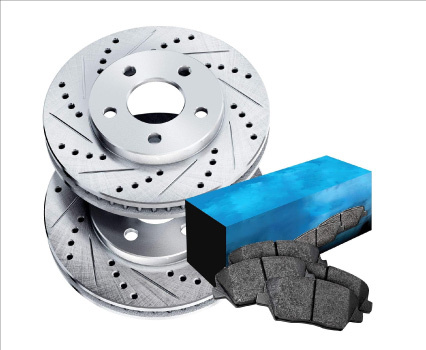The Powersports Brake Market Is Accelerating: Are You Geared Up for Safer Adventures?

The Powersports Brake Market is growing steadily, driven by the increasing passion for recreational powersports and outdoor adventures worldwide. Valued at USD 7,705 million in 2024, this market is projected to reach USD 9,775 million by 2030, growing at a compound annual growth rate (CAGR) of 4.0% from 2025 to 2030. The demand for advanced and reliable braking systems in powersports vehicles is reshaping safety and performance standards, making this sector a focal point for manufacturers and technology innovators.
Powersports Brakes: Essential for Safety and Performance
Powersports vehicles, including motorcycles, all-terrain vehicles (ATVs), utility terrain vehicles (UTVs), snowmobiles, and personal watercraft, operate in challenging environments that demand superior braking performance. These vehicles require specially designed brake components, including disc brakes, drum brakes, calipers, pads, rotors, and hydraulic systems, to ensure rider safety and vehicle control. The rising interest in powersports activities, utility, and off-road applications across various sectors, including agriculture, forestry, and defense, has fueled the market’s growth.
Braking technology innovations are crucial market drivers. Systems like anti-lock braking systems (ABS), electronic braking, lightweight materials, and regenerative braking for electric models are enhancing braking efficiency and rider control. These technologies reduce stopping distances, improve vehicle stability, and adapt to diverse terrains, from muddy trails to snowy slopes.
Market Segmentation and Regional Dynamics
Among vehicle types, motorcycles dominate the market, accounting for a 36.23% share in 2024, driven by their extensive use for commuting, recreation, and sports. Factors such as increasing urbanization, rising fuel costs, and affordability compared to cars drive global motorcycle demand. Additionally, the adoption of premium motorcycles with advanced braking technologies supports segment growth. Other vehicle types, such as ATVs, UTVs, snowmobiles, and dirt bikes, contribute significantly to market diversity and demand.
Regionally, North America holds the largest market share at 40.27%, benefiting from a robust culture of recreational outdoor activities, advanced manufacturing infrastructure, and stringent safety regulations. Consumers in this region prioritize high-performance, durable brakes, boosting aftermarket sales and OEM investments. Meanwhile, the Asia Pacific region is the fastest-growing market, driven by rising disposable incomes, urban population growth, and the increasing adoption of electric and hybrid powersports vehicles, which require cutting-edge braking solutions.
The Electric and Hybrid Revolution in Braking
The rise of electric and hybrid powersports vehicles is revolutionizing the brake market with regenerative braking and electronic control systems. Regenerative braking converts kinetic energy into electrical energy during deceleration, easing wear on traditional friction brakes and increasing vehicle range. Brake-by-wire systems, replacing mechanical linkages with sensors and actuators, offer faster response times and improved modulation.
This technological evolution presents vast opportunities for OEMs and aftermarket suppliers to innovate and differentiate. However, it also requires significant research and development investment, as well as compliance with evolving safety standards. Overall, the shift towards electrification promises durable growth for the Global Powersports Brake Market.
Challenges and Market Opportunities
Despite its positive outlook, the market faces challenges such as high manufacturing costs, raw material price volatility, and the complexity of integrating advanced electronic braking systems. These factors may limit adoption in cost-sensitive markets. Seasonal sales patterns in regions like North America and Europe further complicate inventory management and aftermarket demand forecasting.
To overcome these challenges, companies are adopting flexible manufacturing, diversifying product lines, and using advanced demand forecasting tools. The integration of braking systems with digital vehicle controls and energy-efficient technology opens new avenues for innovation.
Conclusion
The Powersports Brake Market stands at the intersection of tradition and innovation, driven by the global enthusiasm for powersports activities and the rapid advancement of braking technologies. With a projected growth to USD 9,775 million by 2030 and a CAGR of 4.0%, stakeholders, ranging from manufacturers to aftermarket suppliers, must navigate a dynamic landscape shaped by safety regulations, electrification, and growing consumer expectations. As the market evolves, braking systems will continue to be vital for enhancing safety, performance, and the overall powersports experience.